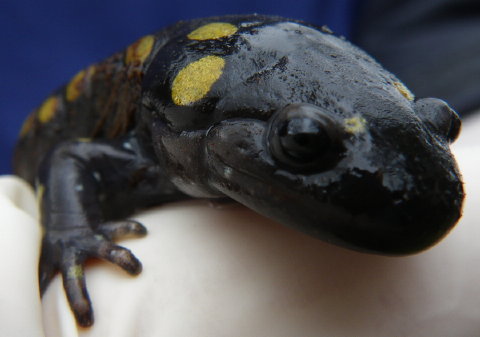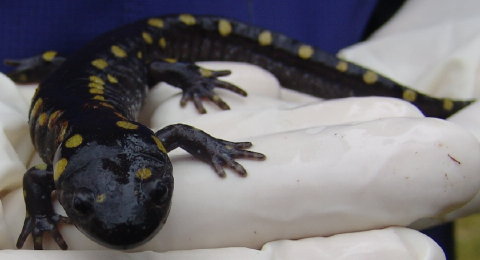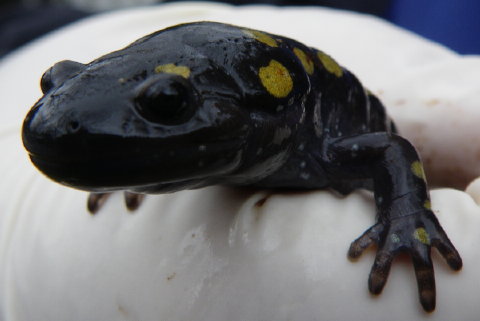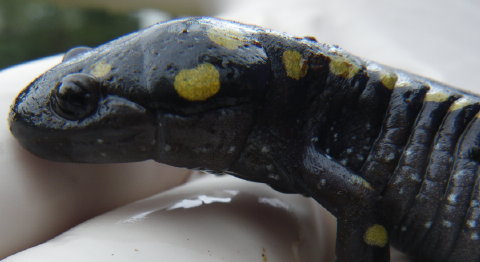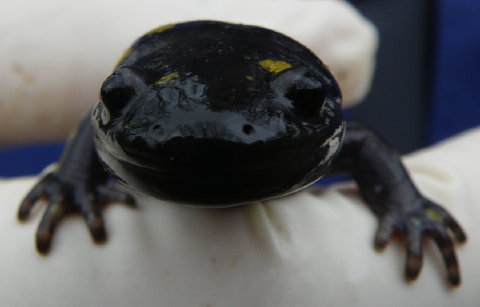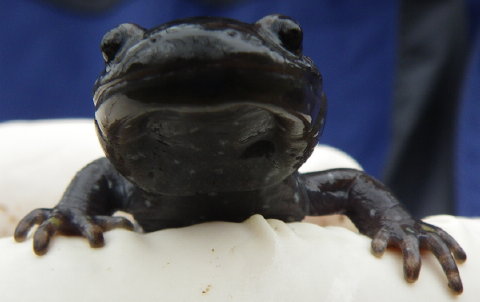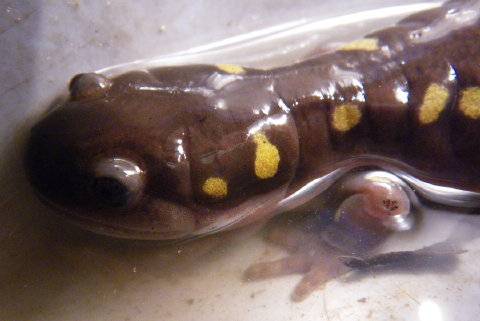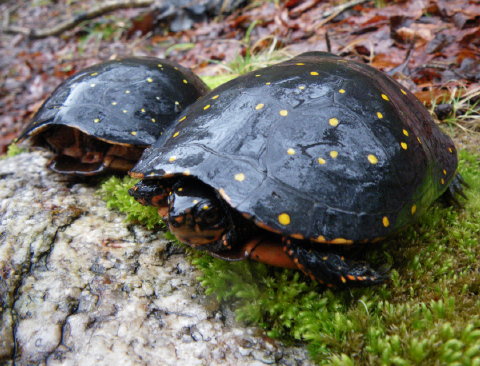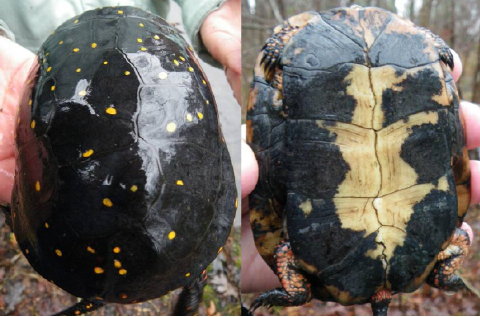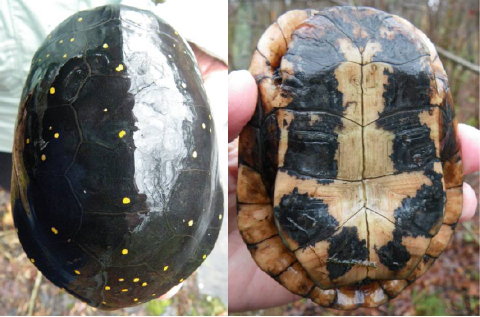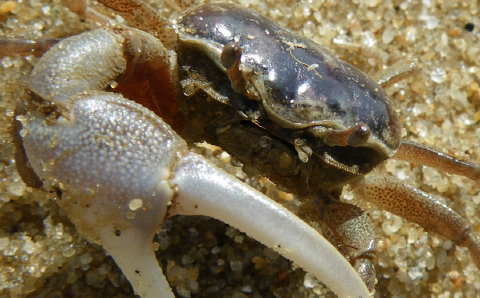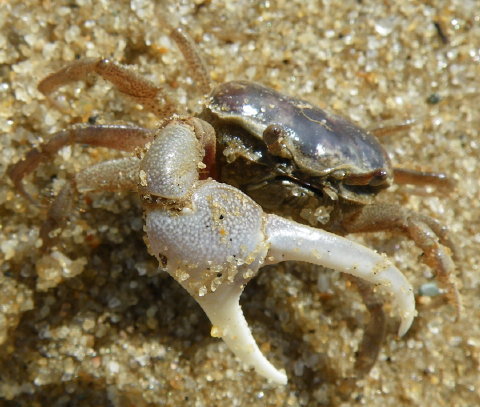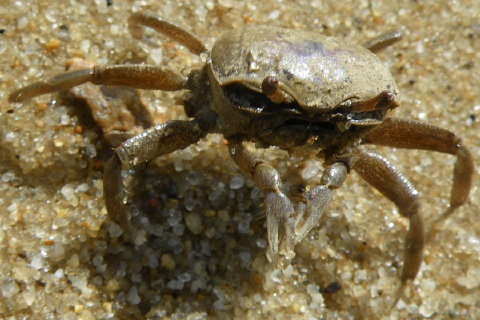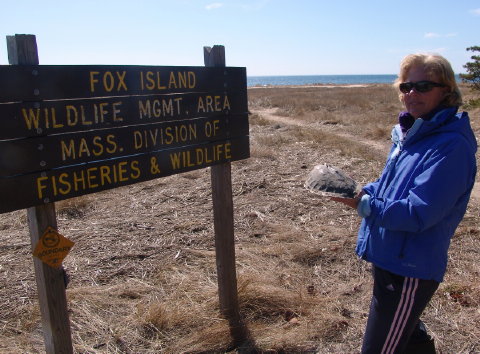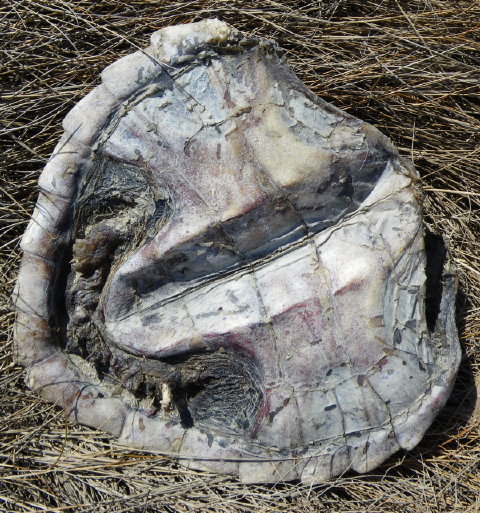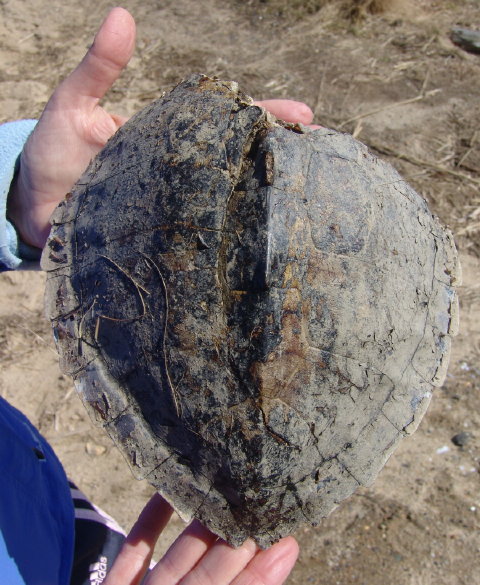(Yellow) Spotted Salamander (Ambystoma maculatum)
Well, I guess it depends on your point of view. From our viewpoint, these spotted salamanders are really cool critters. So secretive in these parts that you rarely find them except during their annual spring norturnal mating orgy in the absolute worst of weather conditions, the improbabilty of encountering spotted salamanders definitely enhances the value of the moment. With the series of snapshots in this posting, we present a portrait of a spotted salamander. Note that each picture is hyperlinked to a larger sized image when clicked.
Spotted Salamander Body
Quite a handsome specimen. Check out the four digits on the front limbs and five on the back. Also, note the two parallel rows of yellow spots along the length of the salamander’s body.
Spotted Salamander
A real cutey as this critter mugs for the camera. Every couple of minutes, the salamander slurps its tongue in and out faster than the photographer can click the camera.
Spotted Salamander Profile
Augmenting the exquisite yellow dots painted in a parallel series along its dorsal surface, these salamanders have constellations of smaller blue-gray spots along their sides, under their chins and on their ventral surfaces.
A Face That Only a Mother and Turtle Journal Could Love
We don’t know about this salamander’s mother, but we do know that Turtle Journal thinks this critter has quite a compelling portrait.
Spotted Salamander: Up Close and Personal
Who could resist that enigmatic amphibian smile?
